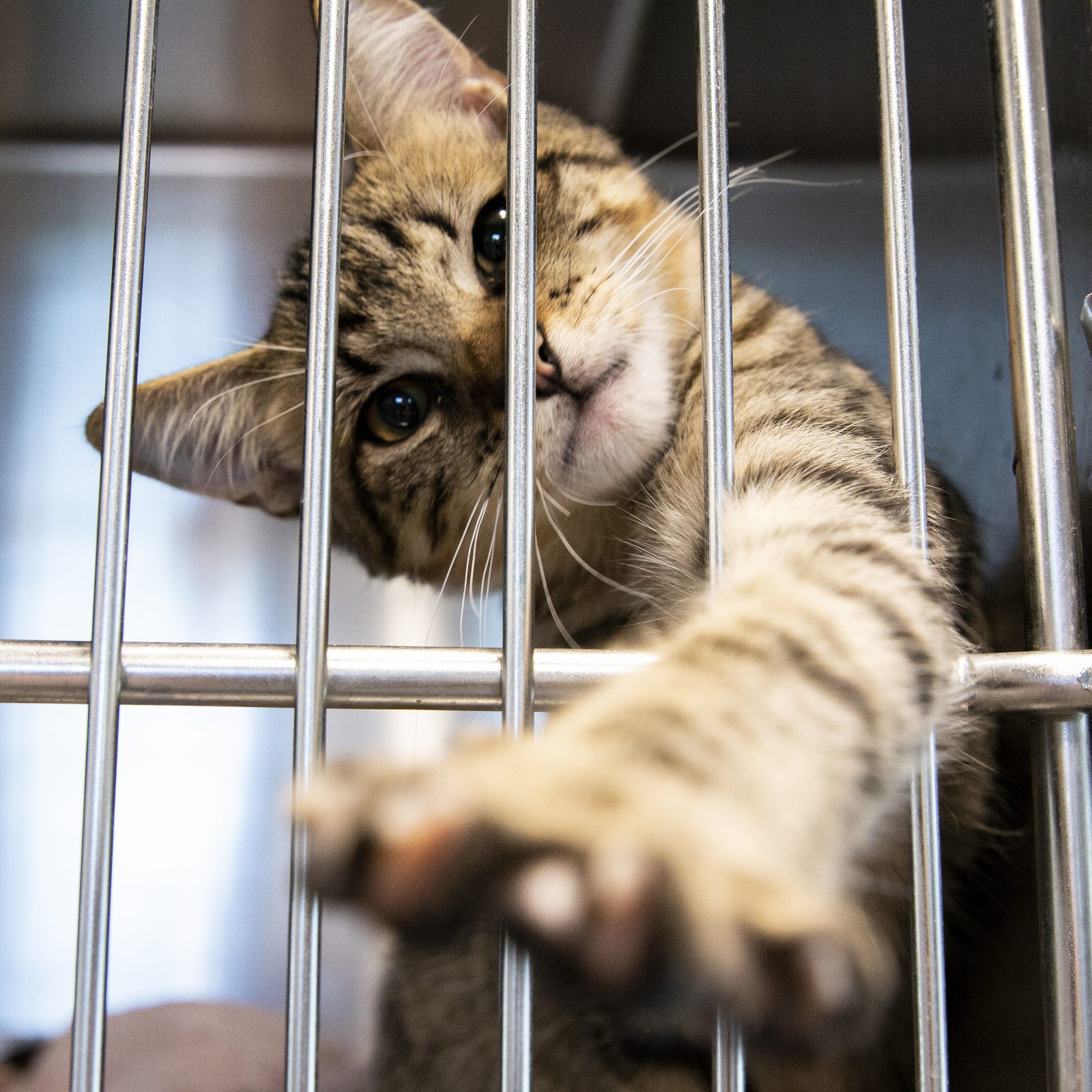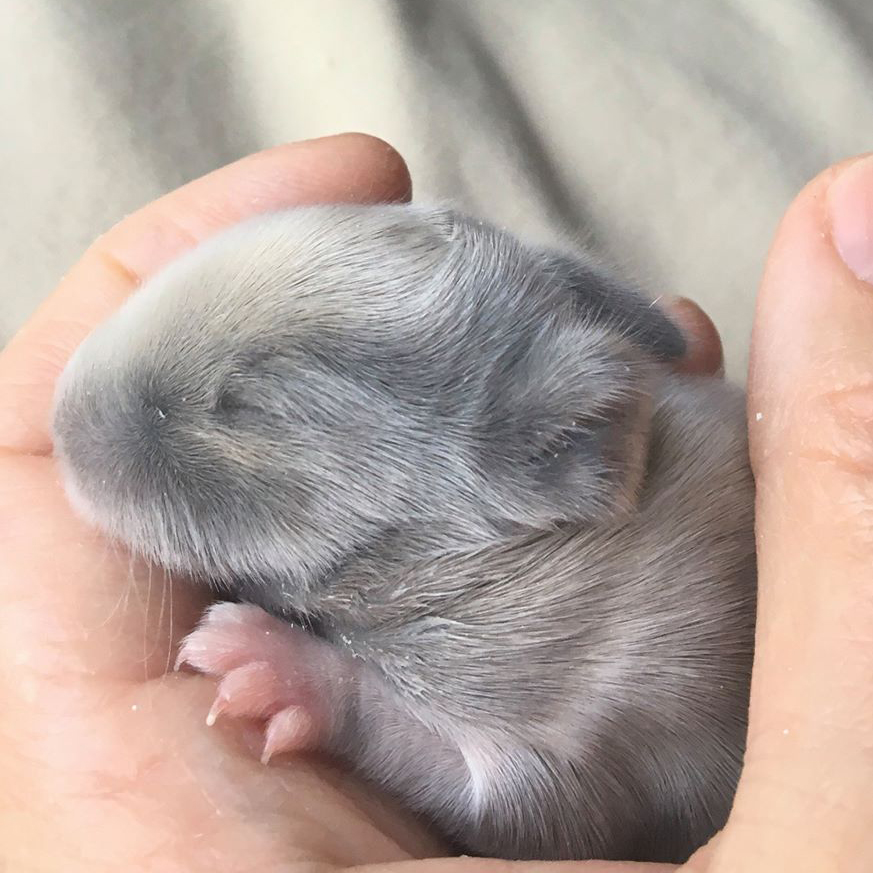Stop animal cruelty in its tracks.
All too often we at the Humane Society of Southern Arizona see victims of animal cruelty and neglect show up at our doorstep. We do everything we can to provide care to pets who have been abused, but we don’t stop there. We work hard to hold abusers accountable and to stop the abuse from happening in the first place.
HSSA’s animal cruelty investigator, Mike Duffey, works with law enforcement, including local agencies, fire departments, Arizona livestock investigators, and local animal services agencies to provide a seamless response to cruelty calls. Services through this branch of HSSA include professional training seminars, public outreach, law enforcement support services, emergency medical care and fostering for abused animals, and evidence collection.

Our program allows the public to share information on suspected cruelty and neglect, as well as concerns about irresponsible breeders, animal vendors and other related issues. Our educational program provides a variety of programs for adults and youth to attack the roots of animal cruelty. We also offer court-mandated courses about proper care and treatment of animals, a critical step in stopping the cycle of harm to pets.
In order to expand our reach and make even more of a difference, Mike and HSSA helped to convene the Animal Cruelty Taskforce of Southern Arizona (ACT) in order to:
- Review and increase awareness of animal cruelty laws in southern Arizona
- Enhance and coordinate enforcement of animal cruelty laws
- Educate law enforcement, animal care professionals and other interested agencies in aspects of animal cruelty and the relationship of animal cruelty to domestic and other forms of human abuse and violence


ACT is not an investigative organization, although many of its member organizations are. The taskforce’s primary purpose is to provide public education and training to professional organizations. ACT may assist existing police, animal control agencies and other investigative organizations with their public mandate to protect animals from neglect and abuse.
ACT is not an animal rights organization. ACT is a non-political coalition of organizations who share the mutual goals of protecting animals and human beings from violent crime through the enforcement of existing laws, prosecuting and rehabilitating offenders, and providing education and services to the animal and human victims of violent crime.
Membership in the Animal Cruelty Taskforce of Southern Arizona is limited to personnel from law enforcement and criminal justice agencies, personnel from organizations with existing programs that aid law enforcement and the prevention of animal cruelty, and personnel such as veterinarians or related professionals who are trained in detecting and diagnosing animal cruelty, treating animal victims and human offenders, and providing public education.
ACT members are available to provide educational presentations to Neighborhood Watch members, homeowners associations, school groups, church groups, and other organizations, sharing how the public can act to protect animals in our community. Regular outreach programs on the subject of animal cruelty are available through the Humane Society of Southern Arizona’s Community Outreach Department. For more information, or to schedule a presentation, call 520-327-6088, ext. 121.

We can all do our part to protect animals and report signs of animal cruelty or neglect - the biggest difference between the two is intention. Learning what to look for can be the difference between life and death for an animal in an unsafe situation. The humans living in those homes may also be at risk of mistreatment.
Know the signs:
Knowing the physical signs and symptoms of animal cruelty and neglect can help save the lives of animals in need.
• Tick and flea infestation
• Untreated wounds of the body
• Hair loss or patches of missing hair
• Extremely thin, “starved” appearance
• Continued and excessive limping
• Pets that cower in fear or act aggressively when approached by a person
• Pets that are showing signs of injury or illness without veterinary care
• Encrusted eyes
• Matted hair
• Excessive number of animals in the home
• Deceased animals
• Animals tied outside and left unattended
• Animals left in hot cars that are in distress
• Animals living in filthy conditions
Report acts of animal cruelty or neglect:
- Emergencies: Please call 911
- For tie-out and other neglect violations, call Pima Animal Care Center at (520) 724-5900
- For Crimes against animals in Pima County, call the Pima County Sheriff’s Department at (520) 351-4900
- For Crimes against animals in Marana, call Marana Animal Services at (520) 382-8020
- For Crimes against animals in Sahuarita, call Sahuarita Animal Services at (520) 520-445-7877
- For crimes against animals in Tucson city limits, call Tucson Police Department at (520) 791-4444
- To leave an anonymous tip, call Pima County Attorney’s Office at (520) 882-7463 or 88 –CRIME
- For emergencies related to wild animals, illegal hunting, trapping etc., call the Arizona Game and Fish Department at (520) 628-5376
For more information on becoming an ACT member visit www.ACT-AZ.org
To request an educational training session visit www.HSSAZ.org/ACT

Bowser’s Story
Bowser came to the Humane Society of Southern Arizona (HSSA) when he was 7 months old. Upon his arrival, Bowser was visibly underweight at only 38 pounds.
HSSA’s medical team went to work caring for Bowser and getting him back to a healhty weight. After two weeks Bowser had gained a healthy 27 pounds and began to come out of his shell. Once Bowser was comfortable he became a playful pup who was full of life.
The Animal Cruelty Taskforce of Southern Arizona (ACT) is responsible for investigating these unfortunate circumstances. HSSA is proud to have them as a partner in keeping pets in Southern Arizona safe. Thanks to their dedication, innocent pets like Bowser are given a voice.
To help HSSA give a second chance to pets in need make a donation at www.HSSAZ.org/Donate






















